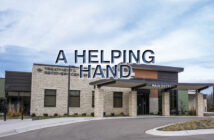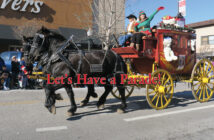Enjoy the world’s past and present without leaving the comfort of town with the many offerings found right here in Lawrence.
| 2019 Q2 | story by Julie Dunlap | photos by Steven Hertzog
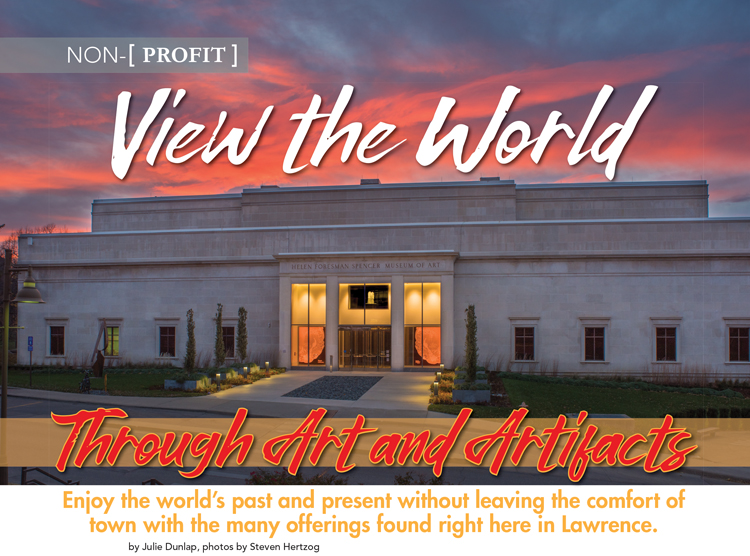
Spencer Art Museum
Escape the heat this summer while seeing the world on a budget thanks to the innovative and expert care given to the millions of international treasures, specimens and artifacts right here in Lawrence.
Spencer Museum of Art
Established in 1928 as the University of Kansas Museum of Art, the Helen Foresman Spencer Museum of Art stewards more than 45,000 works of art from six continents and 5,000 years of human history.
“The Spencer Museum is a small but mighty full-scale art museum that is famous for its international capacity,” explains European and American art curator Susan Earle. “We work to bring in objects and artists from all over the world right here to Lawrence’s doorstep.”
In addition to the multitude of pieces on display, the building itself is a worthy and magnificent work of art. A recent renovation transformed the 40-year-old neoclassical building into an airy, inviting space with gathering and education spaces, and increased accessibility.
Entering from Mississippi Street through the main entrance (third floor), visitors are greeted by a light, open lobby—even on a cloudy day—with the welcome desk immediately to the left and the Central Court directly ahead. The north and south fourth-floor galleries can be seen from the Central Court and accessed by stairs or elevator.
The main-floor’s exhibition space typically rotates every six months, housing through late June the current exhibition, “The Power of Place: KU Alumni Artists.” This installation, featuring works by 30 artists who earned degrees at the University of Kansas (KU), explores the concept of “place,” whether it be a physical location or a sense of belongingness, or a lack thereof. The exhibition actually begins outside along Mississippi Street with an installation by Hock E Aye Vi Edgar Heap of Birds. Inside, it features soaring artwork scaling the walls, growing from the floor, hanging from above and enclosing visitors as well as smaller pieces that draw in and ignite the imagination of even the most casual observer of art.
The fourth-floor galleries have both rotating exhibition spaces and longtime favorites from the museum’s massive collection. Visitors can find everything from centuries-old international artifacts and works to the modern American “Politics, Race, Celebrity: Photographs from the Esquire Collection,” featuring original photos from the famed magazine (on display through July 7).
Earle estimates curators typically plan 18 months to three or more years for each new exhibition and points out that the museum’s collection is grouped by theme rather than by geography or time period, providing visitors with a look at the ways a common inspiration or idea has been interpreted through art over time and location.
“People can make those connections and contrasts for themselves,” Earle says of this unique concept for arrangement.
More than 100,000 people from all over the world, including local and regional school children and KU students from every discipline, visit the Spencer Museum of Art annually. Free group tours for five or more people may be arranged; self-guided tours, art activities, scavenger hunts and audio tours are available on-site, with iPads and signage coloring in the history and origins next to the works on display. A free app is also available, Spencer Museum of Art – KU, for smartphones.
“Entertainment on your own schedule,” Spencer Museum communications manager Elizabeth Kanost says with a smile. “We want people to engage with art in whatever capacity they feel most comfortable.”
WHERE: 1301 Mississippi St.
WHEN: Tuesday, Friday, Saturday: 10 a.m. to 4 p.m.
Wednesday, Thursday: 10 a.m. to 8 p.m.
Sunday: noon to 4 p.m.
HOW MUCH: Admission is free; donations are accepted.
LEARN MORE: www.spencerart.ku.edu
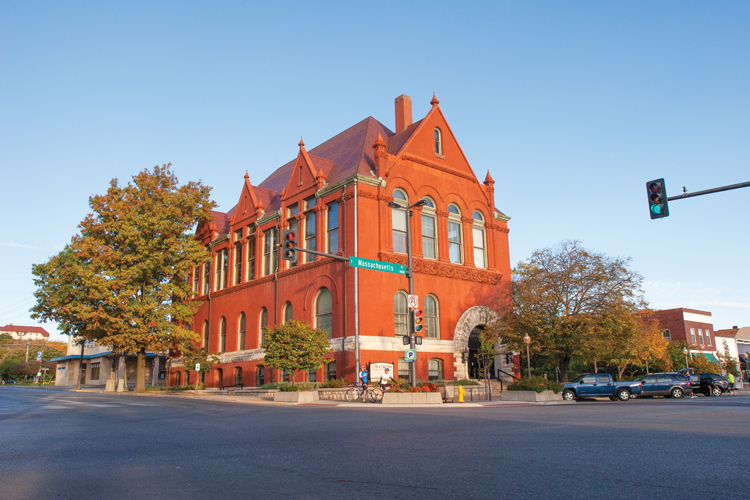
Watkins Museum of History
Watkins Museum of History
For a more local tour through time, check out the Watkins Museum of History, on the northwest corner of 11th and Massachusetts streets.
The stately 131-year-old building is, in itself, a story of the growth of Lawrence. In 1888, when local entrepreneur J.B. Watkins built the multistory building to house his bank and mortgage company, people questioned why he would erect such a grand structure so far away from downtown. At the time, Lawrence’s Downtown district only bustled to about Ninth Street, but Watkins, a successful land spectator and mortgage lender, knew the city would continue growing south, and he wanted to be ready for it.
Watkins’ widow, Elizabeth Miller Watkins, donated the building to the city in 1929. It was used as City Hall until 1970 and reopened as what is now called the Watkins Museum of History in 1975 by the Douglas County Historical Society. While the building has been renovated for each use, original tile, lighting, wood floors and accents remain, preserving the body and spirit that drove Watkins’ vision for Lawrence.
Guests entering from the Massachusetts Street entrance step onto the landing of the grand staircase leading down to the first-floor meeting spaces and up to the second-floor exhibit and office spaces, where the original marble mosaic notes the location of the Watkins National Bank. Inside the second-floor exhibit space, a time line depicting the changes and growth in Douglas County wraps around the southern wall with exhibits featuring an Eldridge family chair, a historic Old Sacramento Cannon and an original pike used by John Brown’s insurrection.
Up another flight of beautiful wooden stairs, guests can immerse themselves in Lawrence history with a collection that includes an antique electric car, James Naismith’s desk and J.B. Watkins’ former corner office space and bank vault door. Children are welcome, too, and can enjoy exploring an 1878 Victorian playhouse in the southwest corner of the third floor.
Exhibits on both floors highlight infamous and unknown slices of regional history on a rotating basis.
“We tell the stories of county history,” Watkins’ public engagement coordinator Will Hickox says of the museum’s connection to the formation and development of the region. “The stories we tell are often about struggles for freedom.”
The Watkins Museum of History partners with other organizations, including Haskell Indian Nations University, the Spencer Museum of Art, KU’s Natural History Museum and the Wakarusa River Valley Heritage Museum, to tell these stories through exhibits, events and activities throughout the year.
“We encourage people to come in for film screenings, book talks and music events,” Hickox says of the different ways to learn about local history from this precious resource.
WHERE: 1047 Massachusetts St.
WHEN:
Summer Hours:
Tuesday, Wednesday, Friday, Saturday: 10 a.m. to 4 p.m.
Thursday: 10 a.m. to 8 p.m.
Sunday: 1 p.m. to 4 p.m.
HOW MUCH: Admission is free; donations are accepted.
LEARN MORE: www.watkinsmuseum.org
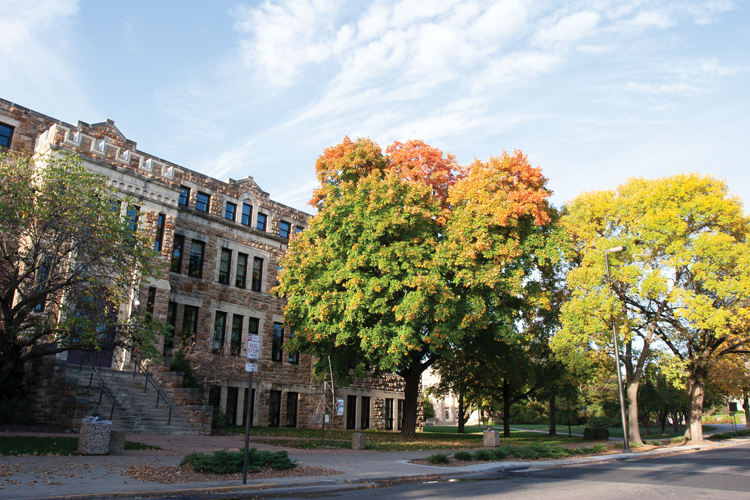
KU Natural History Museum
KU Natural History Museum
If the Watkins History Museum is a step back in time, the KU Biodiversity Institute and Natural History Museum is a flux-capacitor-fueled catapult. Housed in the stunning Dyche Hall on Jayhawk Boulevard, the KU Natural History Museum has compiled and cared for its natural history collection for more than 150 years, a collection that now includes more than 10 million species and artifacts.
“We combine education and entertainment in telling the grand stories in the life of the planet from 3 billion years ago to the present,” says Biodiversity Institute director Leonard Krishtalka.
More than 50,000 visitors explore this physical time line of the world each year at the museum, with self-guided tours, school and group tours, and special events and exhibits available. The museum offers 15 scavenger hunts within and outside of the building from the “Something Bigger Than Me” and “Museum Quest” hunts for kids and families to the adults-only “Sexy Science” and “Sexier Science” scavenger hunts for those whose interests are more provocative in nature.
Visitors entering through the main doors off of Jayhawk Boulevard will find the museum gift shop to the left, a mosasaur circling above and the infamous and awe-inspiring panorama wrapping the body of the fourth-floor exhibit space. The panorama has fascinated viewers for well over a century, providing a nearly 360-degree look at nature throughout North America.
One floor up, guests are invited to Explore Evolution, with interactive displays highlighting the variances in DNA that create the mass diversity in the natural world.
The sixth floor was recently renovated to feature a microbial exhibit rivaling any art museum for color, movement and beauty even though the subjects themselves (viruses, bacteria and other microbes) may act in harmful ways at times. Live animals and colorful displays of the natural world line the cases in the main space, and a live bee tree buzzes in the sixth-floor entry for close-up viewing.
Down below the main entrance, the third floor awaits with fluorescent rocks and fossils glowing colorfully in a dark room, while mammal and reptile fossils—including dinosaur fossils—line the halls like a millennia-old zoo. Down the hall, the long-beloved Bugtown intrigues young visitors. Near the center of it all, a relatively new exhibit provides sunshine and lushness year-round. The Paleo Garden (often called the “Please Touch” garden by schoolchildren drawn to its hands-on nature) features live plants thriving under growth lights alongside their fossilized relatives.
“The natural world is inherently interesting,” associate director of public programs Teresa MacDonald says, “and people are inherently curious.”
Krishtalka agrees, adding that he hopes all visitors will “enjoy and be dazzled” by what they see and continue to ask questions about the world around them for years to come.
WHERE: Dyche Hall, University of Kansas, 1345 Jayhawk Blvd.
WHEN:
Tuesday through Saturday: 9 a.m. to 5 p.m.
Sunday: noon to 4 p.m.
HOW MUCH: Admission is free for members and KU students, otherwise a $7-per-adult and $4-per-child contribution is requested.
LEARN MORE: www.biodiversity.ku.edu

